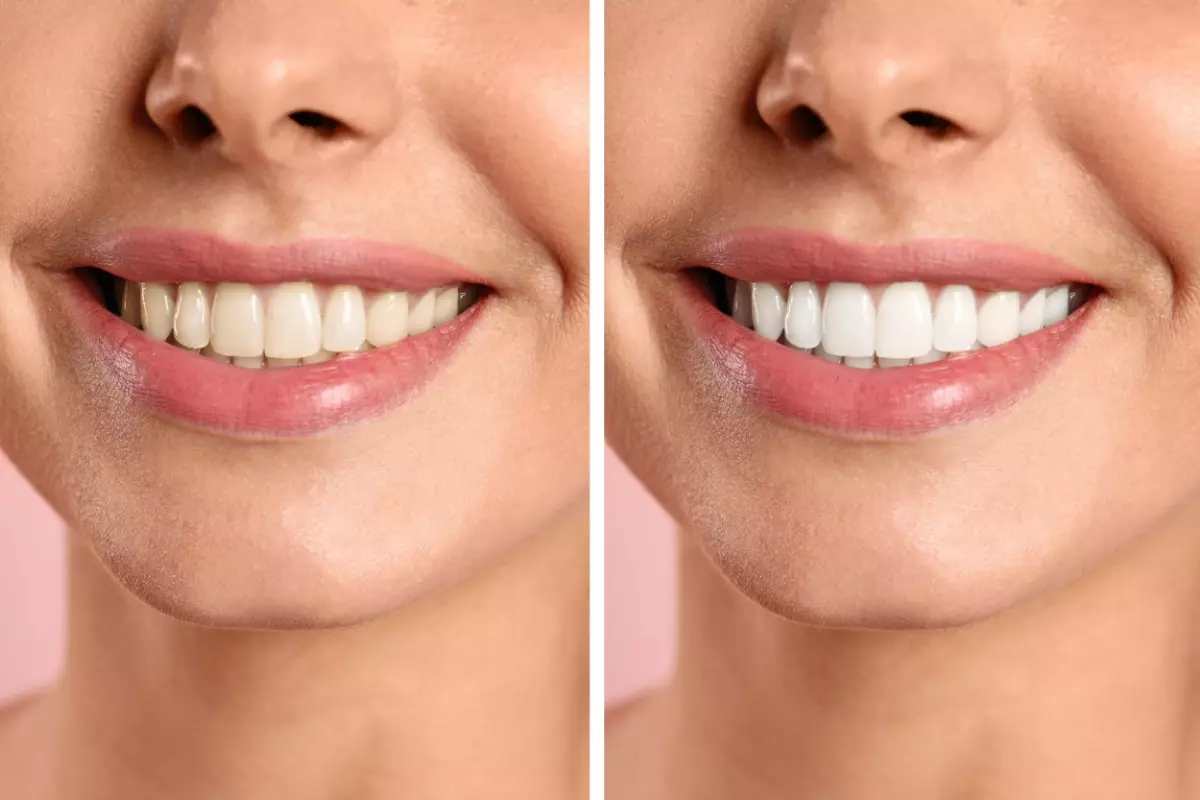Think of your dental website as a grand entrance to your clinic in the digital world. Whether you’re just starting your dental business or want to grow it, your website often serves as their first touchpoint with your services, as most people tap into the Internet for their needs.
Your website isn’t just a digital business card; it’s a virtual storefront that can attract new patients. A high-quality website can act as a 24/7 receptionist, marketing your services, scheduling appointments, and providing patient-focused content.

That’s why including a well-crafted website in your dental marketing strategy is so important. It helps you stand out, build trust, and make a lasting impression before a patient even walks through your doors.
The right dental website can brush up your reputation, floss away the competition, and make your practice shine brighter.
So, what makes a website stand out in the crowded field of online dentistry? A perfect blend of visually appealing design, streamlined functionality, and engaging content.
Ready to explore the exciting world of dental website design? We’ll share insights on aesthetics, user experience, and every essential step in crafting a website that attracts new patients.
The Key Elements for a Great Dental Website Homepage
A homepage acts like a welcoming receptionist who invites users to explore the practice’s services, learn about its team, and, ideally, schedule an appointment. So, what goes into making a homepage that truly shines?
The benefits of a well-crafted homepage are manifold. Not only can it attract new dental patients, but it can also keep existing ones engaged, provide useful information, and establish your practice as a trustworthy, professional entity in dentistry. By investing time and effort into creating a high-quality homepage, you’re setting the stage for online success.
These are a few key elements to include to ensure your homepage is as effective as possible:
Striking Header
Like a dazzling smile, a high-quality header should instantly grab attention and make a memorable first impression. It typically contains your practice’s name, logo, and a concise, impactful tagline that succinctly encapsulates what you do and the unique value you offer. Furthermore, the header sets the tone for the entire site, giving a sneak peek into your brand’s personality.
Designing a striking header involves focusing on clarity, conciseness, and charm. Use simple, straightforward language that speaks directly to your audience. Prioritize easy-to-read fonts and ensure the text contrasts well with the background for maximum legibility.
One important tip for an SEO-friendly website is to incorporate the dental clinic’s address and phone number in the upper right-hand corner of every page. This contributes to local search engine optimization, allowing search engines to identify the dental practice’s location and making it visible to people searching for dentists in that area.
Short Introduction
The introduction on the homepage of your dental website is a valuable opportunity to succinctly communicate your practice’s mission and core values to prospective patients. Think of it as the opening line of your professional story, setting the tone for everything that follows.
An engaging introduction serves multiple purposes. It offers a glimpse into what sets your practice apart, highlighting your expertise, dedication, and unique approach to patient care. It can quickly establish a connection with website visitors, making them feel welcomed and understood.
Creating an effective introduction starts with defining your practice’s unique selling proposition (USP). What makes your practice different? Why should a potential patient choose your clinic over another? Answering these questions can help you craft a compelling narrative.
Next, keep your introduction concise and straightforward. Use clear, approachable language that resonates with your target audience. Remember, you’re not just informing; you’re connecting on a human level. Personalize your message to show that you value patient relationships, not just dental procedures.
The benefits of a well-crafted introduction are numerous. It can boost your practice’s credibility, create an emotional connection with potential patients, and provide a solid foundation for the rest of your site’s content. Moreover, a strong introduction can significantly increase user engagement and lead to higher conversion rates.
The Main Call to Action
In the world of website design, a call-to-action (CTA) isn’t just a suggestion – it’s an enticing invitation for your visitor to take the next step. This strategic tool prompts visitors to move from passive browsing to active engagement, whether that’s scheduling an appointment, exploring your services, or subscribing to a newsletter.

Crafting an effective CTA involves a blend of clear messaging, compelling design, and smart placement. Begin by defining what action you want visitors to take and communicate this with concise, persuasive language such as “Book Your Appointment Today” or “Explore Our Range of Dental Services.”
In terms of placement, the CTA should be prominently located on the page, ideally above the fold. This means it should be visible without scrolling, making it one of the first elements visitors see upon landing on your homepage. Pair this strategic placement with an eye-catching design – use contrasting colors and consider a larger font or button design to make the CTA stand out.
The benefits of a well-placed, high-quality CTA are multifaceted. It encourages immediate interaction, increases the chances of converting visitors into patients, and guides users toward relevant services or information, enhancing their overall experience.
Clear Navigation
A homepage that’s easy to navigate is the heart of a successful dental website. It acts as a reliable compass that leads your visitors directly to the information they seek. Easy navigation provides a smooth, intuitive user experience, minimizing frustration and preventing potential patients from clicking away.
An accessible homepage features clear, well-organized menus, meaningful icons, and an intuitive layout. Menus should be concise yet comprehensive, covering all main areas of your website, such as’Services,’ ‘About Us,’ ‘Contact,’ and ‘Book an Appointment.’Group related pages together under dropdown menus to keep things tidy. Place important links in the header and footer, as these areas are where users look first.
Making your homepage easy to navigate has significant benefits. It allows potential patients to find the information they need quickly and efficiently, from learning about your practice to booking an appointment.
It also reflects positively on your dental brand – just as a well-organized clinic suggests a competent dentist, an easy-to-navigate website speaks volumes about your attention to detail and commitment to patient satisfaction.
The Essential Elements for Patient-Focused Content
In addition to creating a high-quality, well-crafted homepage, your dental website should also include a section that contains patient-focused content. This type of content allows you to shift the spotlight onto your patients, highlighting how your practice can meet their needs and enhance their dental health journey.

It includes comprehensive details about your services, educational materials on dental health, patient testimonials, and personalized content such as blog posts addressing common patient concerns or questions.
This type of content positions you as a trusted resource for dental health information, enhancing your credibility. Secondly, it offers value to your patients outside of the treatment room, potentially improving their oral health habits and overall well-being. Lastly, patient testimonials and success stories can serve as powerful endorsements of your services, building trust with prospective patients.
Service-Related Information
Imagine your service page as the polished display windows of your dental practice, showcasing the range of treatments and procedures you offer. These pages are pivotal, providing prospective patients with information about how you can meet their dental needs and enhance their oral health.
The service-related page on your dental website has two purposes: to inform and to reassure. It informs by detailing your procedures, from routine cleanings and check-ups to advanced cosmetic dentistry. It reassures by explaining what patients can expect during each procedure, demystifying the process, and alleviating apprehensions.
To craft a high-quality service page, begin by listing all the services you offer. Then, for each service, provide a clear, concise description outlining the procedure, its benefits, and what patients can expect. Use language that’s accessible and comforting. Steer clear of technical jargon, or if you must use it, provide a simple explanation. Including images or videos can also enhance the understanding and provide a more comprehensive view.
New Patient Information
The purpose of a new patient page is to provide essential information to newcomers, helping them understand what to expect during their first visit and ensuring a smooth transition into your dental practice.
This page should include details like office hours, location, parking information, and an outline of the first-visit procedures. It’s also a good idea to provide downloadable new patient forms to streamline the check-in process, a rundown of accepted insurance plans, and an introduction to your team.
Creating a high-quality new patient page starts with empathizing with a new patient’s concerns. Think about the information you’d want to know before a first visit and present it in an organized, easy-to-find manner. Keep language simple and welcoming, aiming to reassure and inform simultaneously.
Including a new patient page on your dental website has many benefits. It saves time for your staff by reducing the amount of routine information they need to convey via phone or email. It can also decrease new patient anxiety by providing clear expectations and increasing familiarity with your practice. This streamlined approach enhances the patient journey, ensuring a smoother transition from initial inquiry to their first appointment.
Before and After Photos
A before-and-after page on your dental website is like an artist’s portfolio, providing visual evidence of your skills and quality of work. This page showcases the transformative power of your dental services, revealing the difference your practice can make in a patient’s smile and confidence.

Creating a high-quality before and after page involves selecting clear, well-lit photographs that distinctly demonstrate the improvements made. Pair these visuals with concise descriptions of the treatments provided to achieve these results. To respect patient privacy, always ensure you have permission to share these images.
Videos
A video page on your dental website is a virtual tour guide, delivering information and building connections in an engaging and dynamic way. This page serves as a hub for video content, ranging from educational clips explaining dental procedures to testimonials from satisfied patients.
The purpose of a video page is twofold: to educate and to engage. Videos can help demystify complex dental procedures, making them more understandable to patients. They can also showcase your practice’s personality, allowing patients to meet the team and see your facility before setting foot in the office.
To create a high-quality video page, consider both content and technical aspects. Content should be relevant and interesting, whether it’s explaining dental hygiene tips, walking viewers through a dental procedure, or sharing patient experiences.
On the technical side, ensure videos are professionally filmed and edited, with clear visuals and audio. Also, ensure your page loads quickly and videos are easy to play on both desktop and mobile devices.
Frequently Asked Questions
The FAQ page on your dental website serves as an ever-ready help desk, providing answers to common patient queries. It’s a resource hub offering answers to everything from basic questions about dental hygiene to specific inquiries about dental patient financing.
Creating a high-quality FAQ page involves compiling the most commonly asked questions about your practice and dental care in general. Keep answers clear, concise, and jargon-free. For complex topics, like dental patient financing, consider breaking down the information into simpler terms or using bullet points for clarity. The layout should be easy to navigate, with questions grouped by topic for easy browsing.
An FAQ page offers numerous benefits. It enhances patient education, saves time for your staff, and can even boost your search engine optimization if you structure your questions and answers well. Additionally, it builds trust, showing patients that you understand their concerns and are ready to address them.
Dental Blog
A blog page on your dental website offers a blend of information, advice, and stories that bring value to your patients. It serves as a platform for showcasing your dental knowledge, offering advice, and sharing updates about your practice.

The purpose of a blog page is multilayered. It provides valuable information to patients about oral health, dental procedures, and advancements in dental technology. Also, it allows you to share practice updates and feature patient stories, thus creating a connection with your audience.
Creating a high-quality blog page involves regularly publishing engaging, relevant content. This can include articles about oral hygiene, explanations of dental procedures, tips for dental care at home, and updates about your practice. The content should be written in an accessible, engaging style, and each post should be appropriately tagged and categorized for easy navigation.
One of the key benefits of a blog is its impact on search engine optimization (SEO). Regularly publishing fresh, relevant content can help improve your dental website’s ranking on search engine results, making it easier for prospective patients to find your practice online. Additionally, blogs provide an opportunity to use keywords strategically, further enhancing your SEO efforts.
The Essential Elements for Website Credibility
What elements can make your dental website a beacon of trustworthiness in the vast digital ocean?
Some strategies to promote your dental practice’s credibility include:
- Offering proof of your expertise and experience
- Including testimonials and reviews from satisfied patients
- Presenting easy-to-access contact information
Meet the Team and About Us Pages
Consider the About Us or Team Member page as the virtual handshake in your dental practice’s digital world. It’s where you give your dental practice a face and personality — an element in building patient trust.
This page introduces your dental team to prospective and current patients. It humanizes your practice, making it more relatable and approachable. It’s your chance to share your team’s qualifications, experience, and dedication to patient care.
Creating a high-quality ‘About Us’ page requires engagingly showcasing your team’s expertise and passion. Start with professional photos of each team member accompanied by a brief but engaging biography. Highlight their qualifications, degrees, certifications, and years of experience.
The benefits of this page are multifold. It not only showcases your team’s credentials and competencies, assuring patients of your capability to provide high-quality dental care but also enables patients to familiarize themselves with your team before their visit. This can significantly ease anxiety and establish a level of comfort before they even step into your practice.
Social Proof
Think of social proof as the digital equivalent of word-of-mouth recommendations. It includes patient reviews and testimonials. By showcasing these elements on their website, dental clinics can build trust and credibility with potential patients.

Including social proof on a dental clinic’s website is more than just a marketing strategy; it’s a way to communicate trust, quality, and expertise to potential patients. It makes the clinic’s website not just an information hub but a platform that speaks volumes about the clinic’s commitment to patient satisfaction and quality care.
Testimonials
A testimonial page is a space where potential patients can hear directly from others who have experienced the clinic’s services. One of the main benefits of including a testimonial page is its authenticity. Real stories from real patients resonate more deeply with people than any advertisement.
Highlight feedback that covers a range of services, from routine cleanings to more complex procedures. It’s also beneficial to feature testimonials that mention the clinic’s staff by name, as personal shoutouts can highlight the clinic’s friendly, welcoming environment.
You might choose to dedicate an entire page to these stories or integrate them throughout the site for a more seamless experience. Adding photos or videos can also make testimonials more engaging and relatable. Remember, the goal is to make these testimonials genuine, providing clear, relatable proof of the exceptional care your clinic offers.
Reviews
A review page is a testament to the quality of your service, offering prospective patients real-life social proof from those who have walked through your practice doors before them.
Creating a review involves curating genuine feedback from your patients. Whether it’s a line of gratitude, a detailed account of a positive experience, or a five-star rating, these nuggets of praise can work wonders in demonstrating to a potential patient your service quality.
Authenticity is key to a high-quality review page. Avoid generic or fabricated information. Instead, use real comments from actual patients. If possible, include the patient’s name (with their permission), which lends credibility.
Contact Information
A contact information page is your digital reception desk—the go-to spot where potential and existing patients can find the necessary details to contact your practice. This page helps patients book appointments and bridges the communication gap, fostering a sense of accessibility and open dialogue.

Include all necessary information, such as your practice’s physical address, phone numbers, email addresses, and office hours. The presentation should be clean and well-organized. To provide the utmost convenience, consider including a contact form that patients can fill out directly on the site, allowing them to ask questions or schedule appointments quickly.
It’s also a great idea to include a map showing your office location and a photo of your building’s exterior. This will aid new patients in finding you and give your online presence a tangible feel.
The Essential Elements for Sellability
As mentioned previously, your dental website is your digital storefront, helping you to attract potential clients and convert them into returning ones. To draw in a wider clientele, your website should provide a seamless journey for potential clients.
This means highlighting your top value propositions and selling points and making it hassle-free and quick to contact your clinic or schedule online appointments.
Click-to-Call for Mobile
The “click-to-call” feature allows patients browsing on their smartphones to tap a phone number to initiate a call to your office. It eliminates the need for them to jot down or memorize your contact number, streamlining the process of scheduling an appointment or asking questions.
First, ensure that your phone number is displayed prominently on your site, especially on the homepage and the contact information page. The number should be in HTML format and marked up with the “tel:” scheme.
Moreover, click-to-call capitalizes on the impulse moment of a visitor deciding if they want more information or to book an appointment without delay. It reduces the chances of them getting distracted or reconsidering their decision as they search for a way to contact you. This immediacy not only improves user experience but also increases the likelihood of converting website visitors into actual patients.
To maximize the effectiveness of your Click-to-Call feature, consider including a call-to-action (CTA) next to your phone number, encouraging visitors to use it. Phrases like “Tap to Call Now and Schedule Your Appointment!” can be compelling.
Online Appointment Scheduling Options
By integrating an online appointment scheduling system into your website, you enable patients to book their visits anytime, anywhere, without the need to call during office hours.
First, select a reputable scheduling software that caters to dental practices, like Dentrix, EagleSoft, and Solutionreach. They have user-friendly interfaces and comprehensive features, including appointment reminders, calendar sync, and customizable scheduling options. Ensure the software you choose integrates smoothly with your website and provides a secure, easy-to-navigate platform for your patients.

Implementing the scheduling system on your website involves embedding the software’s scheduling widget or link prominently on your homepage and on the contact information page. Position it in a spot where it’s easily accessible, alongside a compelling call-to-action like “Book Your Next Appointment Online!”
From a sellability standpoint, online appointment scheduling meets the modern patient’s expectation for quick, self-service options, enhancing their overall experience with your dental practice. It signifies to them that your practice values their time and seeks to provide flexible, patient-centered care.
Special Offers
Special offers not only help with the initial attractability of your practice but also enhance sellability by demonstrating that you understand patient needs and value affordability. They can be particularly effective in encouraging hesitant patients to make their first appointment or in convincing existing patients to explore additional services.
Your website can offer the following special promotions:
- New Patient Deals: Offer a discounted rate or a complimentary service for first-time patients. For example, a free dental cleaning or consultation can encourage people to choose your practice over others.
- Referral Bonuses: Encourage your current patients to refer friends and family by providing a benefit for both the referrer and the referee, such as a discount on their next visit.
- Seasonal Promotions: Align special offers with seasons or holidays, like back-to-school discounts for children’s dentistry or holiday teeth whitening specials.
- Package Deals: Create packages that bundle services together at a reduced rate. For instance, a preventive care package might include an exam, cleaning, and x-rays at a lower price than if the services were booked separately.
- Membership Plans: For patients without insurance, offer a membership plan that includes basic services and discounts on other treatments for a yearly fee.
- Financing Options: Promoting available financing options for more expensive treatments can make them more accessible to patients concerned about cost, thereby increasing the likelihood they’ll choose your practice for major procedures.
To Conclude
A high-quality, effective dental practice website is more than just a digital presence. It’s a dynamic tool for connecting with prospective patients, demonstrating expertise, and promoting credibility.
When executed well, these elements can transform a dental website into a compelling, patient-friendly platform that drives growth and fosters patient loyalty.


